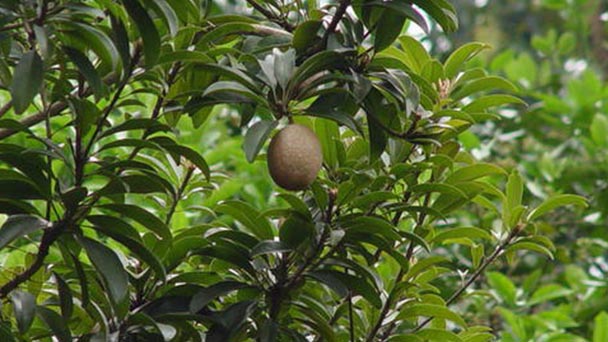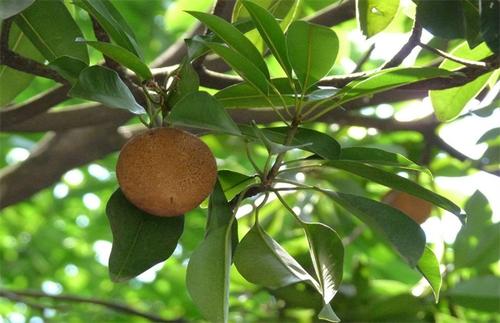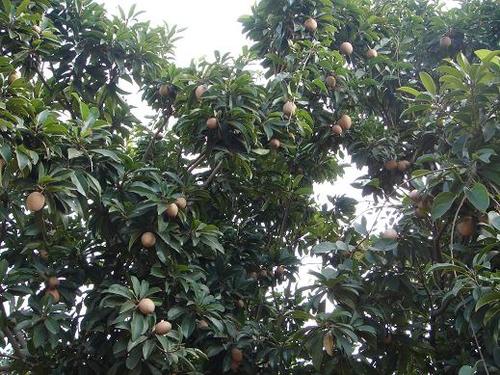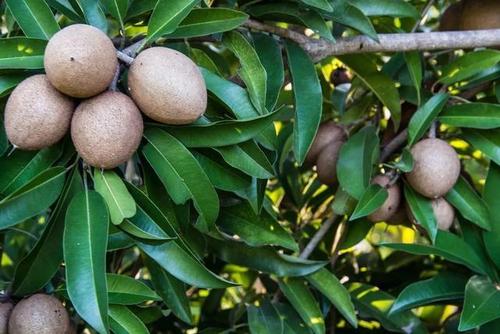How to propagate Sapodilla
Written by Maggie
Dec 24 2020

Sapodilla is native to tropical America and cultivated in Guangdong, Guangxi and Yunnan (Xishuangbanna), China. Sapodilla is rich in nutrients, including protein, fat, sugar, various amino acids, vitamin B1, Vitamin B2, vitamin E, as well as phosphorus, calcium, iron and other trace elements and minerals. Selenium and calcium are among the highest in fruits and vegetables.
Selenium can activate human cells, enhance the vitality, has the role of cancer prevention, inhibition of cardiovascular disease.The trace element molybdenum contained in Sapodilla also has anticancer effects.

Sapodilla propagation method
1. Sapodilla seeds propagation method
Seeds mature from September to October. Seeds can be stored until spring sowing in the following year. The suitable temperature for germination is 24-28 ℃, 20-30 days after sowing.
2. Sapodilla cutting propagation method
Cuttings were carried out in summer, cut to enrich the top shoots, length of 12-15 cm, inserted into the sand bed, room temperature maintained 25-28 degrees Celsius, 30 to 40 days after the insertion rooting.
3. Sapodilla lawing propagation method
In the spring, select 1-2 years of growth to enrich the branches, at 20-25cm from the top of the stem ring peeling, 1-2 cm wide, with leaf rot soil and film bandaging, about 2 months to grow new roots.

Sapodilla cultivation methods
1.Environment
Sapodilla should be built on hills, slopes or flat ground facing the sun and north of the suitable area, with a deep soil layer, no water, little cold air and sheltered areas.
2.Engraftment
It is necessary to dig a hole and set up a post beside the Sapodilla seedlings and to dig a planting hole around them. Fertilizer should be added into the planting hole to facilitate the growth of Sapodilla seedlings.
3. Refurbishment
As it grows, it will have a lot of open branches, and at the right time we will cut off the small branches and leave the large diameter.
4. Fertilization
Fertilization should be done twice a year, the first time in March and the second time in September.

Latest Updated
- Benefits of Bugleweed - 7 Science-backed Health Benefits
- Bugleweed Dangers & Side Effects - Is It Poisonous?
- How to Plant Evergreen Trees - What You Should Know
- When to Plant Evergreens - Grow Guide for Evergreen Trees
- 12 Wonderful Evergreen Shrubs for Your Garden
- 12 Popular Evergreen Plants with Pictures for Beginners
- When And How To Prune A Lilac Bush Like a Pro
- How to Grow & Care for Lilac Vine (Hardenbergia Violacea)
- Japanese Lilac Tree (Syringa Reticulata) Care & Propagation Guide
- Shumard Oak Pros and Cons - What to Know
Popular Articles
- Winter maintenance of Antirrhinum Majus
- How to Grow Terminalia Mantaly Tree
- How to Grow and Care for Crossostephium Chinense
- How to grow Antirrhinum Majus in spring
- Peristeria Elata (Dove Orchid) Profile: Info & Care Guide
- Underwatered Snake Plant (Sansevieria Trifasciata) - Signs And How To Fix
- How to Care for Brazilian Jasmine Plant (Mandevilla Sanderi)
- How to Grow & Care for Graptopetalum Purple Delight in Summer
- Rosa Chinensis (China Rose): Plant Growing & Care Tips
- How to Care for Baby Sun Rose (Aptenia Cordifolia)